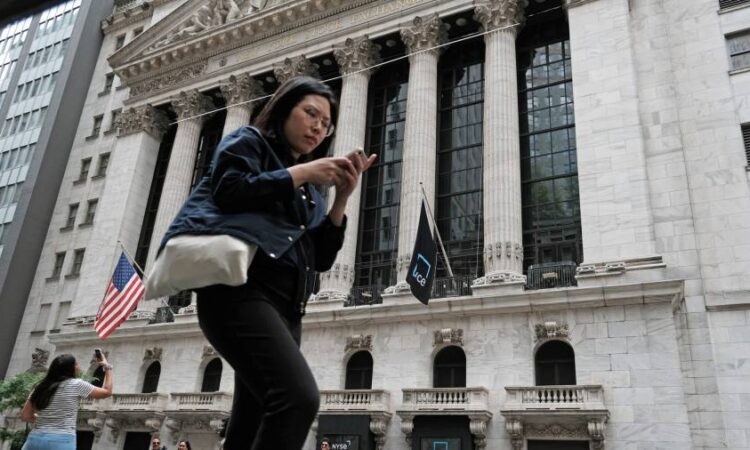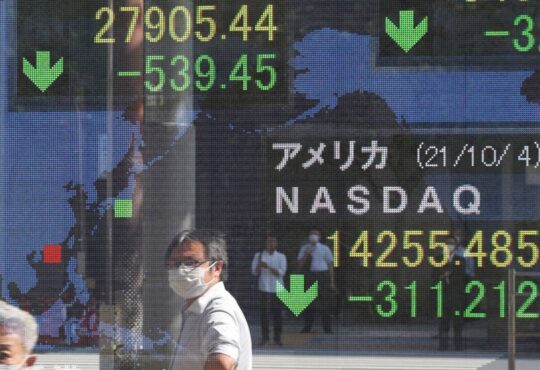
Receive free Equities updates
We’ll send you a myFT Daily Digest email rounding up the latest Equities news every morning.
The writer is a former chief global equity strategist at Citigroup
In 1998, Citigroup poached a team of equity professionals, including me, from HSBC James Capel. I got a pay rise and three months off in the south of France. Legend has it that John Bond, then HSBC chief executive, put in an angry phone call to Sandy Weill, his counterpart at Citi, saying back off. Those were the days.
This hiring spree reflected Citi’s desire to lead the “equitisation” of Europe. Investors were piling into equity funds. Private and state-owned companies were listing on stock markets. A global telecom, media and tech stock boom was in full swing. As continental Europe adopted the dominant Anglo-Saxon economic model, the revenue opportunities for investment banks seemed endless. They were not — a brutal bear market made sure of that.
The global stock market stabilised in 2003. Many market participants, including myself, hoped for a “great rotation” out of bonds back into equities. This would close the valuation gap that had opened up between the two asset classes.
While it is always tempting to tell clients what they want to hear, it dawned on me that a great rotation was unlikely. New accounting rules for pension funds encouraged them to move further into bonds. Regulatory changes for insurance companies made it harder to hold equities. Retail investors, burnt as the late 1990s bubble burst, were not coming back soon.
If the valuation opportunity couldn’t be exploited by conventional investors, other arbitrageurs would emerge. Companies could raise cheap capital in the bond market to buy cheap shares in the equity market, either their own via a share buyback or those of another company via a takeover. Private equity, then a small player in the finance industry, also looked well placed.
The retirement of old, listed shares through takeovers or buybacks started to exceed the issuance of new shares in primary or secondary issues. Stock markets began to shrink. With a typical lack of imagination, I gave this theme a name: de-equitisation. This clumsy, ugly word made my career.
Other agents of the de-equitisation trade emerged. Activist investors bullied unloved listed companies into spinning off assets and buying back shares. Indeed, de-equitisation was never just a financial trade, it was also a governance trade. That’s why it struggled to take hold in Japan — even with languishing share prices, Japanese companies always found it easier to resist shareholder pressure to realise value.
Central banks never really understood de-equitisation. They hoped that cutting interest rates and buying bonds would stimulate capital expenditure, but easy money stimulated more financial engineering than real engineering. A political backlash seemed inevitable. The US has introduced a tax on share buybacks, although to little effect.
There has been much soul-searching about shrinking stock markets, especially in the UK. Many factors have been blamed, such as onerous reporting requirements and a stunted tech sector, but I think the explanation is simple. Domestic institutional investors shifted out of equities into bonds, partly via the adoption of liability-driven investment strategies, opening up an especially wide valuation gap between the two asset classes. De-equitisation was inevitable. Even with the latest interest rate increases, UK de-equitisers can still borrow at 6 per cent in the corporate bond market to buy assets on a stock market generating an earnings yield of 9 per cent. It makes little sense for listed companies to issue more equity or unlisted companies to float.
Some UK companies have chosen to list in the US, where the equity culture is more robust and valuations higher. But even here, de-equitisation has taken hold. Available stock in the US public market has shrunk by about 1 per cent a year since 2000. Even the tech sector has shrunk, with huge buybacks from the likes of Apple countering issuance elsewhere. This marks a big difference from the late 1990s bull market. In 1999-2000, the US tech sector equitised by 29 per cent; in the 2021-22 bubble that figure was only 3 per cent. Maybe that’s why the Nasdaq is more resilient this time — the oversupply of tech equity is less extreme.
The US equity market now trades on a similar (earnings) yield to the corporate bond market, so the de-equitisation trade looks less compelling. But I do not expect it to disappear completely.
As for me, I was the last of those HSBC exiles to leave Citi. I should have followed my research all those years ago and switched out of public into private equity. I didn’t. However, the de-equitisation trade still makes sense, especially in Europe. Maybe it’s not too late.





